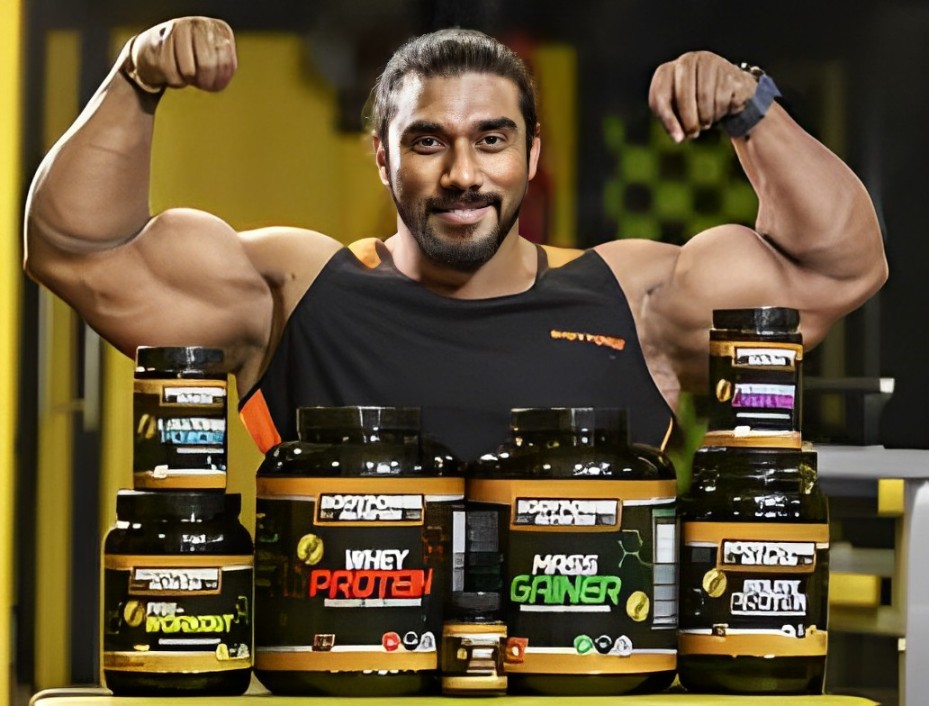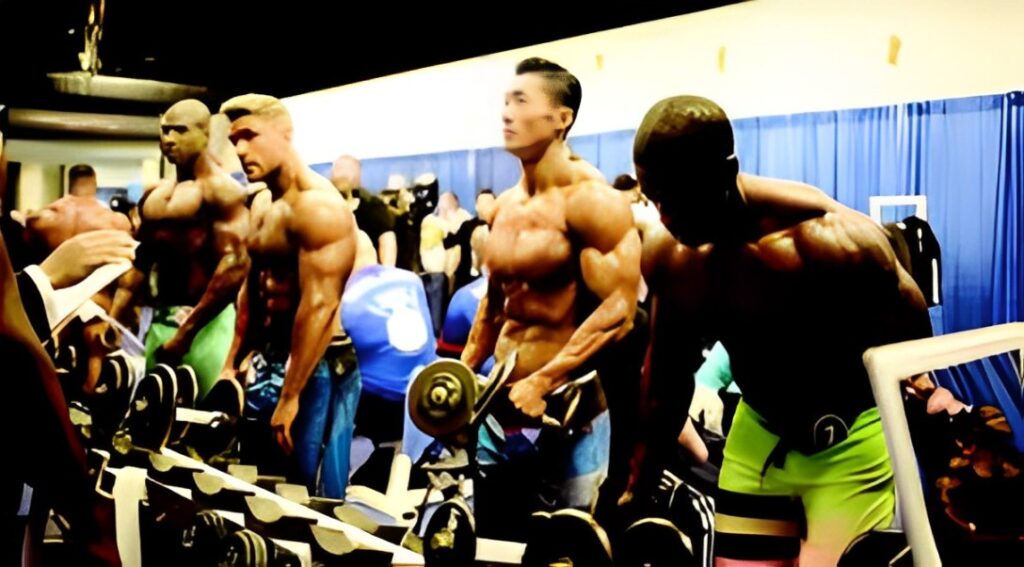Creating a 50,000-word guide on “Functional Training for Bodybuilders: Merging Strength, Mobility, and Performance” involves a thorough exploration of how functional training can enhance a bodybuilder’s overall performance. This extensive guide will cover the integration of functional training principles with traditional bodybuilding techniques to improve strength, mobility, and overall performance. Below is a detailed outline to structure such a comprehensive document.
Outline
1. Introduction to Functional Training for Bodybuilders (3,000 words)
- Definition and principles of functional training
- Why functional training matters for bodybuilders
- Overview of how functional training integrates with traditional bodybuilding
- The benefits of combining strength, mobility, and performance
2. The Basics of Functional Training (4,000 words)
- Key principles and concepts of functional training
- Differences between functional training and traditional bodybuilding
- Understanding the role of core stability, balance, and coordination
- Types of functional exercises and their benefits
- Examples of functional movements and exercises
3. Strength Training Fundamentals (5,000 words)
- Overview of strength training principles
- Importance of compound vs. isolation exercises
- How to incorporate functional strength training into a bodybuilding routine
- Developing a strength training program that complements functional training
- Measuring progress and adjusting strength training
4. Enhancing Mobility for Better Performance (5,000 words)
- The role of mobility in bodybuilding and functional training
- Difference between flexibility and mobility
- Importance of joint health and range of motion
- Mobility exercises and routines for bodybuilders
- How to integrate mobility work into your training program
5. Performance Optimization Techniques (5,000 words)
- Understanding the components of athletic performance
- How to enhance power, speed, and endurance through functional training
- Techniques for improving neuromuscular efficiency
- The role of agility and coordination in bodybuilding
- Performance testing and assessment methods
6. Designing a Functional Training Program for Bodybuilders (6,000 words)
- How to create a balanced functional training program
- Combining strength, mobility, and performance exercises
- Structuring workouts: Frequency, volume, and intensity
- Sample functional training programs for different goals
- Progression and periodization strategies
7. Integrating Functional Training with Bodybuilding (5,000 words)
- How to blend functional training with traditional bodybuilding workouts
- Techniques for transitioning between different types of training
- Balancing functional and bodybuilding exercises in a weekly routine
- Case studies of successful integration strategies
- Common pitfalls and how to avoid them
8. Recovery and Injury Prevention (4,000 words)
- Importance of recovery in functional training and bodybuilding
- Strategies for preventing and managing injuries
- Techniques for effective recovery: Foam rolling, stretching, and rest
- How to adjust training during recovery periods
- Tools and technologies for recovery and injury prevention
9. Nutrition for Functional Training and Performance (5,000 words)
- Nutritional needs for functional training and bodybuilding
- Importance of macronutrients and micronutrients
- Timing and types of meals for optimal performance
- Supplements that support functional training goals
- Sample meal plans and nutritional strategies
10. Mental Preparation and Mindset (3,000 words)
- The psychological aspects of functional training and bodybuilding
- Techniques for maintaining motivation and focus
- Visualization and mental rehearsal for improved performance
- Managing stress and overcoming training plateaus
- Building a resilient and growth-oriented mindset
11. Monitoring Progress and Making Adjustments (4,000 words)
- Methods for tracking progress in functional training
- How to assess improvements in strength, mobility, and performance
- Making data-driven adjustments to your training program
- Tools and apps for progress tracking
- Adapting training strategies based on feedback and results
12. Case Studies and Success Stories (4,000 words)
- Case study 1: Bodybuilder who successfully integrated functional training
- Case study 2: Overcoming common challenges with functional training
- Lessons learned and strategies applied by successful athletes
- Practical insights and tips from real-world examples
13. Advanced Functional Training Techniques (4,000 words)
- Exploring advanced functional training methods
- High-intensity functional training (HIFT) and its benefits
- Incorporating functional training into competitive bodybuilding
- Innovations and trends in functional training
- How to advance from basic to advanced functional training techniques
14. Future Trends in Functional Training (3,000 words)
- Emerging research and developments in functional training
- The evolving role of functional training in bodybuilding
- Predictions for future trends and innovations
- How to stay updated with new techniques and methodologies
15. Creating a Personalized Functional Training Plan (4,000 words)
- How to tailor functional training to individual needs and goals
- Developing a personalized plan that integrates strength, mobility, and performance
- Setting realistic goals and benchmarks
- Example personalized functional training plan
- Tips for long-term success and adherence
16. Resources and Tools for Functional Training (3,000 words)
- Essential equipment for functional training
- Recommended books, websites, and courses
- Tools for tracking and measuring progress
- Apps and technologies that support functional training
17. Common Mistakes and How to Avoid Them (3,000 words)
- Identifying common errors in functional training and bodybuilding
- Strategies for correcting mistakes and optimizing results
- How to learn from others’ experiences
- Preventing and addressing potential issues before they arise
18. Integrating Functional Training into Long-Term Fitness Goals (3,000 words)
- How to maintain and evolve your functional training practice over time
- Strategies for balancing functional training with long-term bodybuilding goals
- The role of functional training in a lifelong fitness journey
- Tips for continued progress and adaptation
19. Conclusion and Final Thoughts (2,000 words)
- Summary of key concepts and strategies
- Encouragement for bodybuilders to embrace functional training
- Final tips for successfully merging strength, mobility, and performance
- Looking ahead: The future of functional training in bodybuilding
Expanded Breakdown of Sections
1. Introduction to Functional Training for Bodybuilders
This section will introduce the concept of functional training, explain its relevance to bodybuilders, and outline the benefits of integrating it with traditional bodybuilding techniques.
2. The Basics of Functional Training
Cover the fundamental principles of functional training, its differences from traditional bodybuilding, and examples of functional exercises that benefit strength, coordination, and balance.
3. Strength Training Fundamentals
Discuss the principles of strength training, how to incorporate functional exercises into a strength training routine, and ways to measure and progress strength gains.
4. Enhancing Mobility for Better Performance
Explain the importance of mobility, differentiate it from flexibility, and provide routines and exercises designed to improve joint health and range of motion.
5. Performance Optimization Techniques
Explore methods to enhance athletic performance, including power, speed, and endurance. Discuss techniques to improve neuromuscular efficiency and agility.
6. Designing a Functional Training Program for Bodybuilders
Provide guidance on creating a balanced training program that integrates functional exercises with traditional bodybuilding routines, including sample programs and progression strategies.
7. Integrating Functional Training with Bodybuilding
Discuss how to effectively combine functional training with bodybuilding workouts, including techniques for balancing different types of exercises and avoiding common pitfalls.
8. Recovery and Injury Prevention
Cover strategies for effective recovery, injury prevention techniques, and how to manage fatigue and soreness. Include tools and technologies that support recovery.
9. Nutrition for Functional Training and Performance
Detail nutritional strategies that support functional training and bodybuilding goals, including meal planning, supplement recommendations, and timing of nutrients.
10. Mental Preparation and Mindset
Address the psychological aspects of training, including motivation, stress management, and mental techniques to improve focus and performance.
11. Monitoring Progress and Making Adjustments
Discuss methods for tracking progress, making data-driven adjustments, and tools for assessing improvements in strength, mobility, and performance.
12. Case Studies and Success Stories
Provide real-world examples of bodybuilders who have successfully integrated functional training, including lessons learned and practical insights.
13. Advanced Functional Training Techniques
Explore advanced techniques and trends in functional training, including high-intensity methods and innovations in training practices.
14. Future Trends in Functional Training
Discuss emerging research, new trends, and predictions for the future of functional training, and how bodybuilders can stay informed and adapt.
15. Creating a Personalized Functional Training Plan
Guide readers in developing a personalized training plan that integrates functional training with bodybuilding goals, including example plans and tips for success.
16. Resources and Tools for Functional Training
List essential equipment, recommended resources, and tools that support functional training and progress tracking.
17. Common Mistakes and How to Avoid Them
Identify common errors in functional training and bodybuilding, and provide strategies for correcting mistakes and optimizing training results.
18. Integrating Functional Training into Long-Term Fitness Goals
Discuss how to maintain and adapt functional training practices over time, balancing them with long-term fitness and bodybuilding goals.
19. Conclusion and Final Thoughts
Summarize the key points
, offer final tips for merging functional training with bodybuilding, and encourage readers to embrace these practices for improved performance and health.













